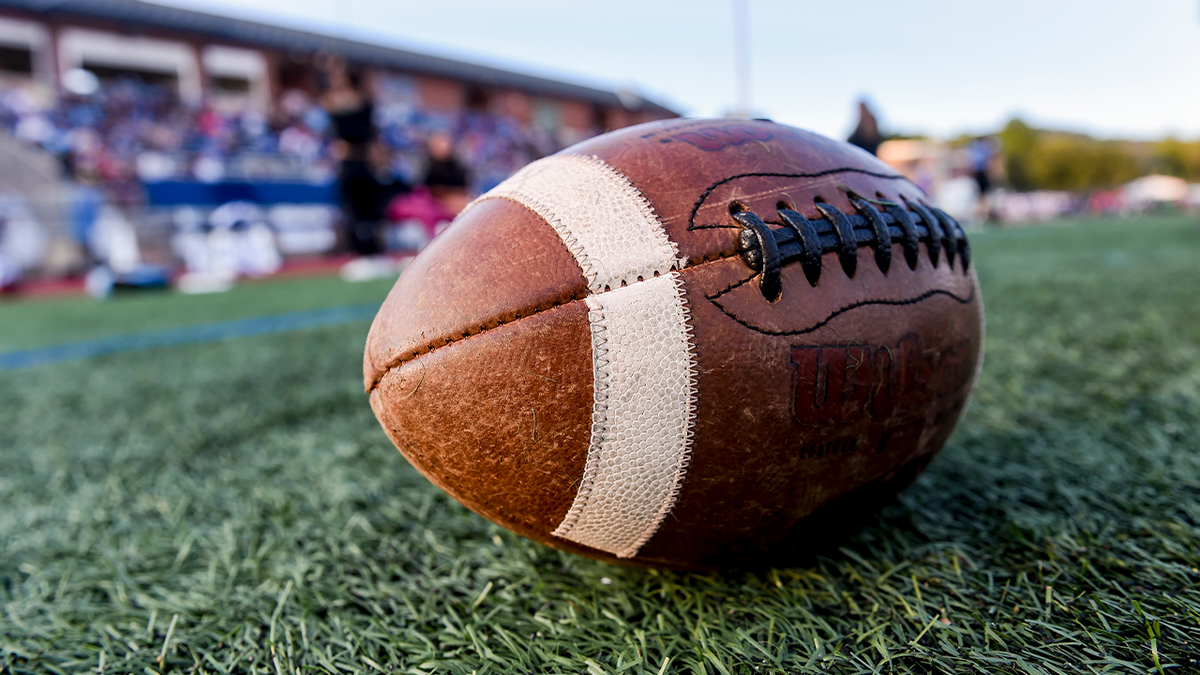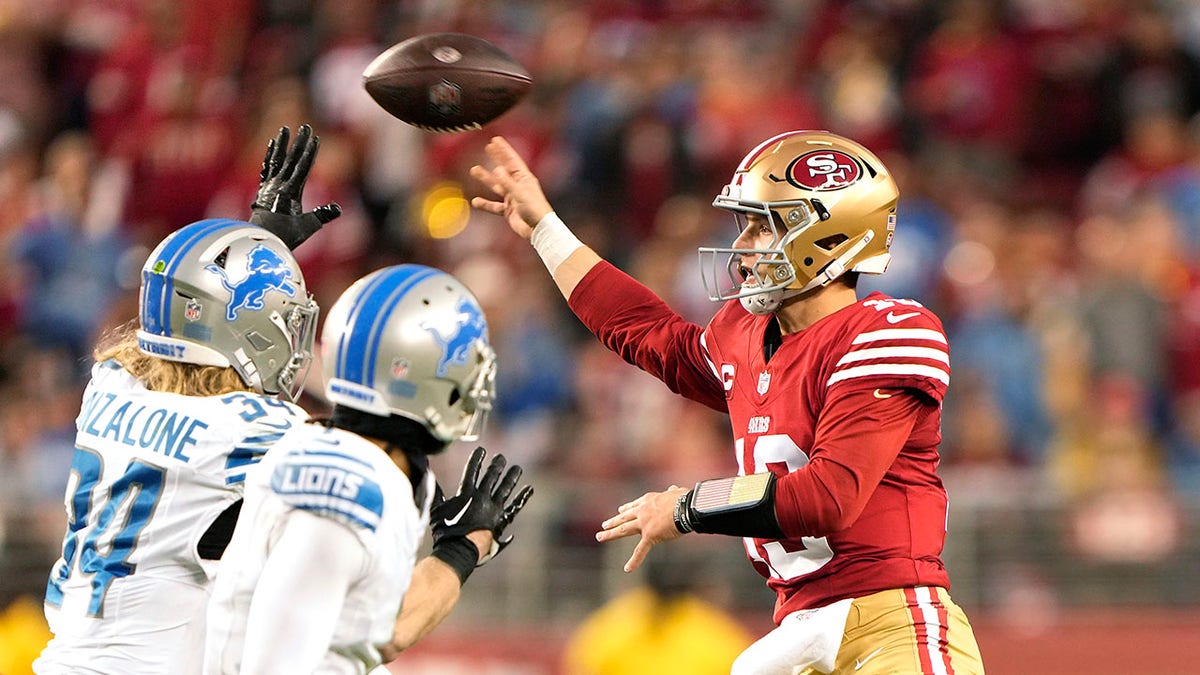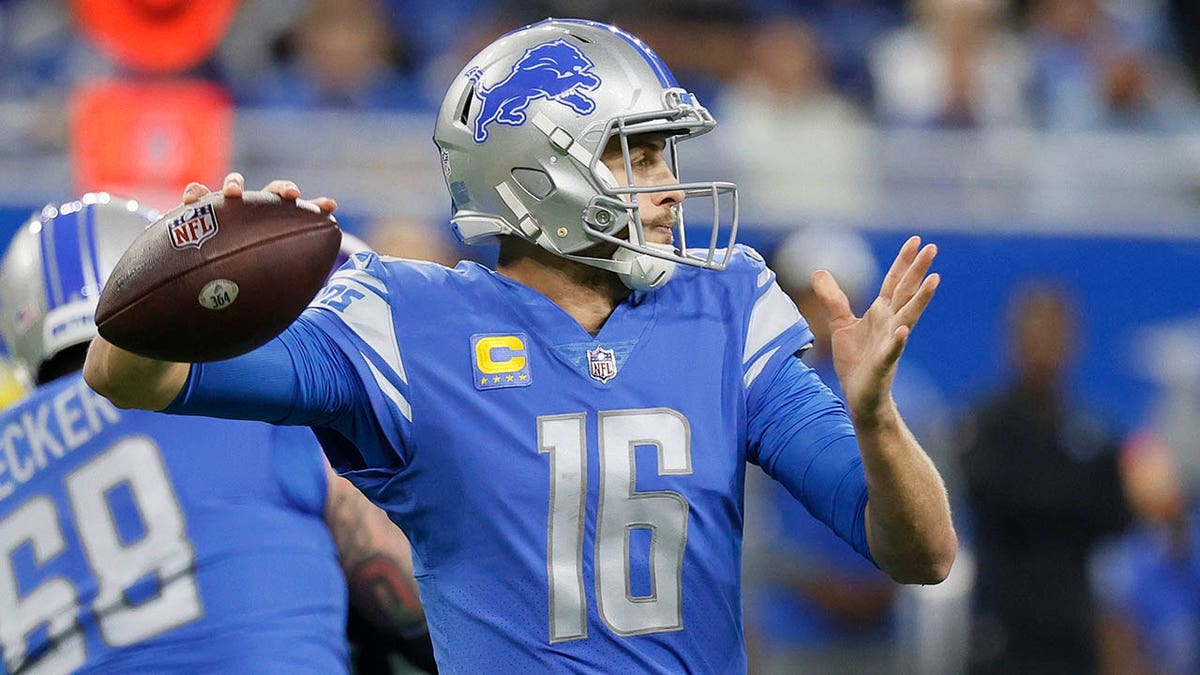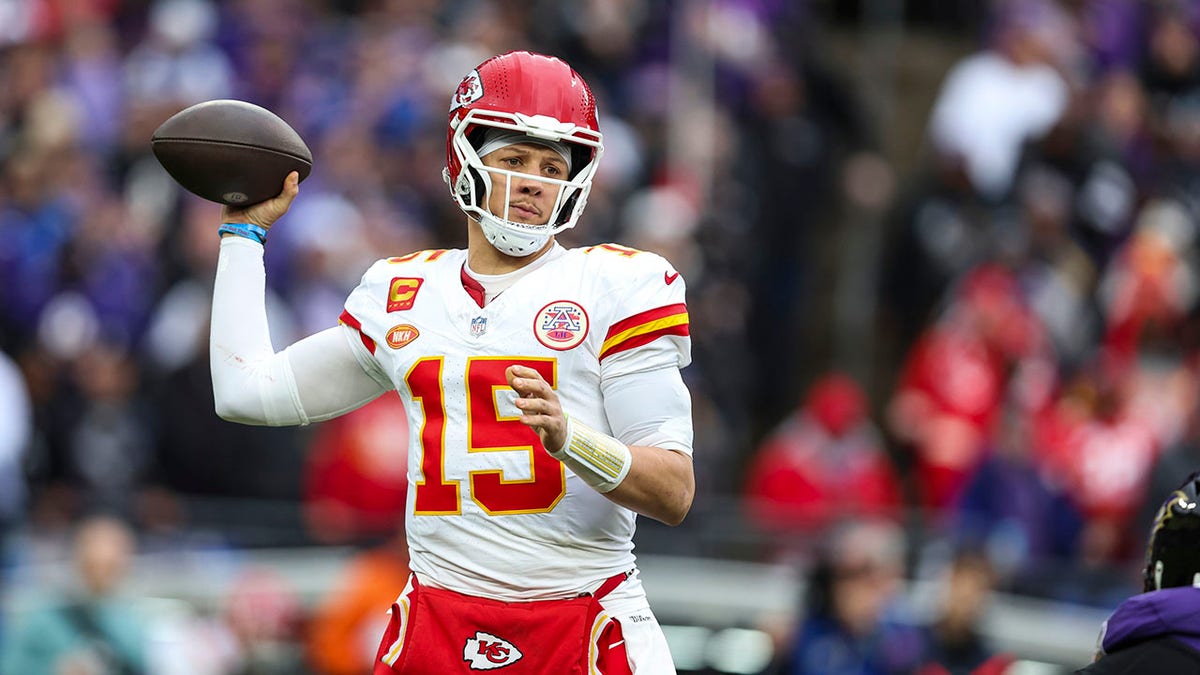Trump would be 'happy to replace' Biden for Super Bowl interview
'Fox News Saturday Night' host Jimmy Failla joined 'Fox & Friends' to discuss his take on Biden dodging the Super Bowl interview for the second time.
This Sunday’s Super Bowl match-up of the San Francisco 49ers vs the Kansas City Chiefs will be played at Allegiant Stadium in Las Vegas with kickoff at 6:30 p.m. EST.
As this year’s football season is capped by the Super Bowl, why not combine several key factors: tailgating, fan pride, trendy commercials, cold beer — and understanding why a football spirals when it's thrown?
A good spiral football pass makes 600 turns per minute — and as the football spins across the field, gravity pulls the nose of the ball downward.
10 TAILGATING ITEMS FOR YOUR SUPER BOWL SUNDAY
The direction the football changes slightly depending on which hand the quarterback uses to throw it, according to Time.com.
For a deeper dive, Fox News Digital asked a nationally acclaimed expert on the subject to explain the spiraling phenomenon play by play.
Why does the football spiral, exactly?
"Because the quarterback applies torque about the ball’s center of mass as it rolls off his outstretched fingers when he’s throwing it," said Timothy Gay, PhD.

A football on the sidelines before the start of the game. (Ben Hasty/MediaNews Group/Reading Eagle via Getty Images)
He is a Willa Cather professor of physics at the University of Nebraska-Lincoln and author of the book, "The Physics of Football."
Is it the shape of a football that creates a spiral effect when thrown?
It isn’t the shape per se, said Dr. Gay, but it’s the torque as described above that causes the ball to rotate or spiral about its long axis that is aligned with the ball’s direction of trajectory.
"In principle, you can throw a soccer ball with a rotation like this. It’s just easier to do it with a ball that can be gripped more easily and that has a smaller diameter," he told Fox News Digital.
"It’s the torque that causes the ball to rotate or spiral about its long axis that is aligned with the ball’s direction of trajectory."
"The laces and the pebbled surface help as well."
What’s science have to do with it?
The football turns over because it is "precessing" (the change in the orientation of the rotational axis of a rotating body) in a tight circle about the direction of the air flow over it — which points in the opposite direction of its velocity. That determines its line of trajectory.
"The ball turns over because the onrushing air exerts a torque on the ball," noted Dr. Gay.

Brock Purdy, No. 13 of the San Francisco 49ers, throws the ball during the third quarter against the Detroit Lions in the NFC Championship Game at Levi's Stadium on Jan. 28, 2024, in Santa Clara, California. (Thearon W. Henderson/Getty Images)
"This torque causes its tip to rotate in a tight circle about the direction in which the ball is traveling. Since this direction changes from up to down as the ball moves through the arc of its flight, the axis of the ball dips down in the same way over the course of the pass."
This tendency for the tip to rotate tightly about the ball’s velocity direction is a phenomenon called "gyroscopic precession," which also governs the way the spinning axis of a top moves when it is spinning on a table, Dr. Gay said.
"The spinning ball is always trying to keep its long rotational axis aligned along the airflow direction."
And, due to gravity, the ball follows the familiar arc, he noted.
"When the quarterback throws it, the ball is pointing upward. When it is caught, it is pointing downward," he said.
This "turnover" happens because the air rushing over it always flows in a direction that points in the opposite direction of its velocity or trajectory, he said.

Green Bay Packers quarterback Jordan Love (10) throws during the first half of an NFL football NFC divisional playoff game against the San Francisco 49ers, Saturday, Jan. 20, 2024, in Santa Clara, Calif. (AP Photo/Ashley Landis)
"The spinning ball is always trying to keep its long rotational axis aligned along the airflow direction."
How does a quarterback use this spiraling phenomenon to reach his target?
The spiraling motion gives the ball rotational inertia, or momentum, which acts to keep the ball aligned with the airflow, Dr. Gay said.
"This minimizes the air drag on the ball — meaning that it can travel farther," he said.
What impacts the speed and direction of the football as it relates to physics?
There are three things, the expert noted, that does this: the force exerted by the quarterback on the ball as he throws it, the force the air exerts as it flows over the ball ("air drag"), and the force of gravity.

Detroit Lions' Jared Goff throws during the first half of an NFL football game against the Minnesota Vikings on Sunday, Dec. 11, 2022, in Detroit. (AP Photo/Duane Burleson)
"The ball’s launch speed and initial direction are determined by the quarterback’s throwing motion," he said.
CLICK HERE TO SIGN UP FOR OUR LIFESTYLE NEWSLETTER
"The parabolic shape of its trajectory is determined by the force of gravity. The fact that a spiral pass turns over is determined by the ball’s rotation and the air drag."
"The ball’s launch speed and initial direction are determined by the quarterback’s throwing motion."
Why is physics only part of the winning equation?
Science only gets a star quarterback so far — and knowing the physics behind a football spiral is part of winning the Super Bowl.

Patrick Mahomes, No. 15 of the Kansas City Chiefs, throws the ball during the AFC Championship NFL football game against the Baltimore Ravens at M&T Bank Stadium on Jan. 28, 2024 in Baltimore, Maryland. (Perry Knotts/Getty Images)
"Achieving a perfect spiral is challenging but doable," said Popular Science.
CLICK HERE TO GET THE FOX NEWS APP
"Even your favorite NFL quarterback might have started with a clumsy first toss. But with practice, they’ve become the ideal throwing machines we cheer for every year."
For more Lifestyle articles, visit www.foxnews.com/lifestyle.

